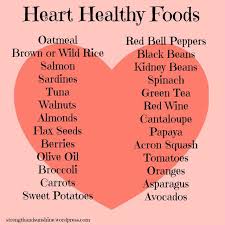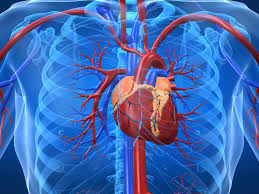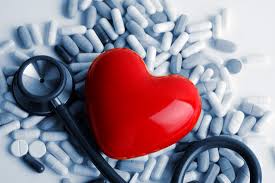
Diagnosed with Cancer? Your two greatest challenges are understanding cancer and understanding possible side effects from chemo and radiation. Knowledge is Power!
Learn about conventional, complementary, and integrative therapies.
Dealing with treatment side effects? Learn about evidence-based therapies to alleviate your symptoms.
Click the orange button to the right to learn more.
- You are here:
- Home »
- Blog »
- side effects ID and prevention »
- Cardio-Toxic Chemotherapy
Cardio-Toxic Chemotherapy

“Cancer survivors have up to a 15-fold higher risk of developing CVD (1), and CVD is recognized as a leading cause of long-term morbidity and mortality…”
It’s not rocket science. If you’ve undergone cardio-toxic chemotherapy and/or radiation, you have an much greater risk of developing cardiovascular disease (CVD) than average people who haven’t undergone chemo and/or radiation.
And you should be taking cardioprotective therapies. What cardioprotective therapies you ask? Read on…
I know this for two reasons. First, the study linked and excerpted below says this. Second, I developed blood clots (deep vein thrombosis), atrial fibrillation (Afib, AF) and Chemotherapy-induced Cardiomyopathy (CIC) all in the years following my diagnosis of cancer and induction therapy, stem cell mobilization and autologous stem cell transplant (SCT).
The more important finding of the study below is that cancer survivors don’t take cardioprotective therapies compared to those people who have not had cancer.
Cardioprotective therapies such as:
- Antiplatelet therapies
- Statins
- ACE inhibitor
- ARB
- Beta-blocker
I would like to suggest two ideas as to why this is- ideas based on my own experience.
When I developed my second blood clot, the doctor prescribed coumadin. I took this therapy for several months. Eventually, I told the physician that I felt tired, was gaining weight and had read about serious long-term side effects caused by Coumadin Therefore I told my doctor that I was stopping this therapy.
The same basic series of events happened when I developed Afib and CIC in late 2010. The cardiologist prescribed metroprolol. After only a couple of days of serious shortness-of-breath, I discontinued taking this medication.
Here’s my thinking. Maybe cancer survivors don’t take preventative medications because they are sick and tired of feeling lousy because of taking medications that are supposed to help/cure/heal, (choose one) them. I know I sure felt this way.
Because I knew that I had CVD due to past chemo and therefore I lived with several associated heart problems, I researched and created a therapy plan of evidence-based but NON-TOXIC heart healthy therapies that I was going to take instead of the conventional, FDA approved, safe and effective, medications.
Heart-healthy:
- Nutrition,
- Supplementation,
- Exercise,
- Lifestyle therapies
If you are curious to see how my Afib, CIC etc. is doing, please scroll below. I have linked results from the past five echocardiograms. In short, my heart problems have either stabilized or improved.
For the record, I agree that self-treatment for any and all serious health problems is dangerous. I will be direct. It was conventional, FDA approved, “safe and effective” therapies that caused all my health problems in the first place so I’m going out on my own now.
To Learn More about T-cell exhaustion and cancer- click now
Are you a cancer survivor? To learn more about evidence-based, non-toxic, non-conventional heart therapies scroll down the page, post a question or a comment and I will reply to you ASAP.
Hang in there,
David Emerson
- Cancer Survivor
- Cancer Coach
- Director PeopleBeatingCancer
Recommended Reading:
- Healing Chemotherapy-induced Cardiomyopathy-heart damage
- CoQ10 to Improve Ejection Fraction in Congestive Heart Failure
- Can Afib be “chemotherapy-induced”?
Suboptimal Use of Cardioprotective Medications in Patients With a History of Cancer
“Rates of cardiovascular diseases (CVD) and risk factors are increased in cancer patients and survivors compared with the general population, and CVD has emerged as a leading cause of long-term morbidity and mortality in this population (1)…
In multivariable analysis, adjusted for age, sex, BMI, hypertension, dyslipidemia, smoking status, diabetes mellitus, and CVD, patients with Cancer History were less likely to be on a statin or antiplatelet therapies…
We also evaluated prescription of cardioprotective medications at the time of admission. In multivariable models (adjusted for the same confounders as detailed previously), prescriptions of antiplatelet agents and statins were similarly lower in patients with Cancer History…
These results suggest that management of modifiable cardiovascular risk factors in patients with cancer is suboptimal compared with those without a history of cancer.
Cancer survivors (cardio-toxic chemotherapy) have up to a 15-fold higher risk of developing CVD (1), and CVD is recognized as a leading cause of long-term morbidity and mortality…
Echocardiogram Results from 2015-2021
- BP.
- left ventricle systolic function EF
- left atrium
- right atrium
- Aortic root-
- Ascending Aorta
All have improved-
- 6/2021 BP- 109 /65 mmHg
- 2/2020 BP –109 /65 mmHg
- 10/2018- BP -126 /82 mmHg
- 9/2016- BP –125 /80 mmHg
- 10/2015-BP –114 /69 mmHg
6/2021 Left Ventricle: The left ventricular systolic function is low normal, with an estimated ejection fraction of 50-55%.
2/2020- Left Ventricle: The left ventricular systolic function is low normal, with an estimated ejection fraction of 50-55%.
10/2018- Left Ventricle: The left ventricular systolic function is mildly decreased, ejection fraction of 40-45%.
9/2016- Left Ventricle: The left ventricular systolic function is mildly to moderately decreased, with an estimated ejection fraction of 40-45%.
10/2015-The left ventricular systolic function is mildly decreased, with an estimated ejection fraction of 40-45%.
- 6/2021 Left Atrium: The left atrium is normal in size.
- 6/2021 Right atrium is upper limits of normal in size
- 2/2020- Left Atrium: The left atrium is severely dilated.
- 2/2020- Right Atrium: The right atrium is moderately dilated.
- 10/2018- Left Atrium: The left atrium is severely dilated.
- 10/2018- Right Atrium: The right atrium is mildly dilated
- 9/2016- Left Atrium: The left atrium is moderate to severely dilated.
- 9/2016 – Right Atrium: The right atrium is mildly dilated
- 10/2015- Left Atrium: The left atrium is mildly dilated
- 10/2015 – The right atrium is normal in size.
- 6/2021- Ao Root d: 5.10 cm
- 6/2021- Asc Ao, d: 4.60 cm
——–
- 2/2020- Ao Root-?
- 2/2020-Asc Ao, d: 4.60 cm
——–
- 10/2018- Ao Root: 4.40 cm
- 10/2018-Asc Ao, d: 4.60 cm
——–
- 09/2016- Ao Root- 4.3 cm
- 09/2016 – Asc Ao- 4.9 cm
——————
- 10/2015- Ao Root: 5.30 cm
- 10/2015– Asc Ao- 4.80 cm
2/2020 The aortic root is abnormal. There is moderate dilatation of the ascending aorta. There is severe dilatation of the aortic root.
10/2018- The aortic root is abnormal. There is moderate dilatation of the ascending aorta. There is moderate dilatation the aortic root.
09/2016- The aortic root is abnormal. There is moderate dilatation of the ascending aorta. There is severe dilatation of the aortic root.
10/2015- The aortic root is abnormal. There is moderate dilatation of the ascending aorta. There is severe dilatation of the aortic root. Maximal diameter of aortic root is 5.3 cm
Multiple Myeloma Survivors- Risk Factors Heart Health
Therapies for multiple myeloma are extremely effective, with overall response rates approaching 100% with initial therapy.3 In general, treatments are well tolerated but do carry some specific Cardiovascular (CV) -related complications…”
The question is not if chemotherapy regimens for the treatment of multiple myeloma (MM) increase your risk of cardiovascular (CV) complications. The question is if a multiple myeloma survivor can reduce his/her risks of these CV complications. MM therapies do increase your risk of many different types of CV complications including blood clots, heart failure, etc. What is not well documented is if you, the MM survivor, can reduce or prevent these risks.
I was diagnosed with multiple myeloma at 34. But cardio-toxic chemotherapy did cause several long-term and late stage side effects.
What I take from the article below is not at what age you undergo aggressive chemotherapy and/or radiation. It’s how cardio-toxic chemotherapy can have short, long term or late-stage side effects that can disable and eventually kill the cancer patient.
I underwent both anthracycline-based chemotherapy (vincristine) as well as cytoxan aka cyclophosphamide.
Both are cardio-toxic chemotherapy and carry a serious risk of heart damage. I underwent both chemotherapies in 1995-97- years before the writing of this blog post. I developed chronic atrial fibrillation in the fall of 2010.
Though I developed a series of CV complications from my many different MM cardio-toxic chemotherapy, I have managed to remain in complete remission from my MM and I have managed my DVTs (in both legs), managed my afib and managed my chemotherapy-induced cardiomyopathy (CIC).
Yes, I should have initiated several evidence-based, non-toxic therapies before I developed all my CV complication but then again, I didn’t know what my risks were. This post documents these risks. Please consider taking action to reduce your risks of CV-related complications.
I am both a MM survivor and MM coach. I have spent hours researching evidence-based non-conventional therapy shown to manage and or heal the damage done by my conventional toxic therapies.
To learn more about those therapies to manage side effects of conventional oncologic therapies, scroll down the page, post a question or comment and I will reply ASAP.
thank you,
David Emerson
- MM Survivor
- MM Coach
- Director PeopleBeatingCancer
Recommended Reading:
- Late Effect- Cardiomyopathy from Chemotherapy
- Organic Diet-Fewer Cancer Dx’s, Longer Cancer Survival
- Patient Preferences in Relapsed/Refractory Multiple Myeloma-
Cardiac Considerations for Modern Multiple Myeloma Therapies
“Myeloma Therapies With Known CV Risks-
Therapies for multiple myeloma are extremely effective, with overall response rates approaching 100% with initial therapy.3 In general, treatments are well tolerated but do carry some specific CV-related complications..”.aka are cardio-toxic chemotherapy…
Cardiovascular Complications of Novel Multiple Myeloma Treatments
“Overview-MM is a plasma cell malignancy characterized by clonal proliferation of malignant plasma cells in the bone marrow microenvironment, monoclonal protein in the blood or urine, and associated organ dysfunction...1
Thrombosis and MM- Cancer is associated with increased risk of venous thromboembolic events (VTEs).4
Increased VTE Risk With IMiDs-The increased VTE risk associated with IMiDs came to attention in 2001, when 2 separate phase 2 clinical trials using thalidomide-based chemotherapy reported a high incidence of VTEs: 7% and 27%.11…




